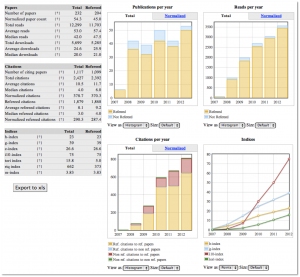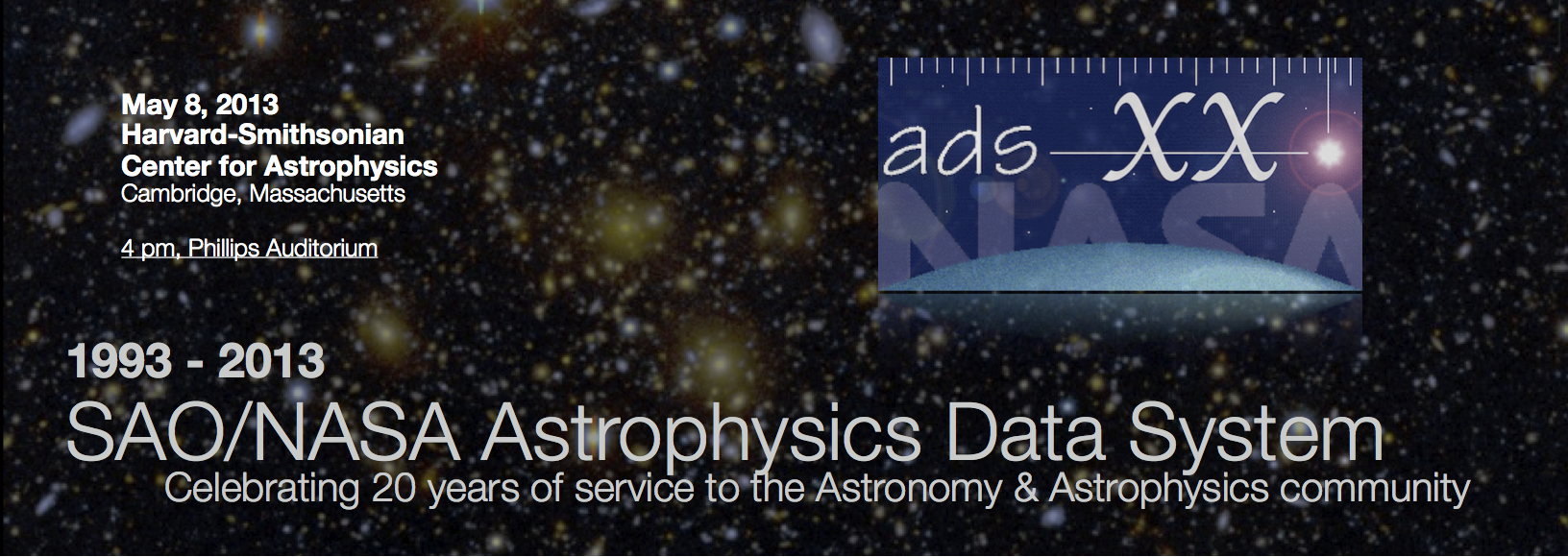Over its lifetime, the ADS has seen its data holdings and user base increase several orders of magnitudes. Its bibliographic database grew from 160K records in 1994 to 10 million in 2013. Its full-text archive grew from 6,000 articles in 1995 to almost 3 million documents today. Its citation graph increased from 250K edges in 1997 to over 57 million citations today. Its user base grew from 200 users in 1994 to over 10 million today (of which 55,000 are heavy users). Here is a short list of milestones accomplished by the ADS team during the past 20 years:
- 1993: Abstract Service launched implementing federated search to SIMBAD object database
- 1994: First web-based version of the ADS Abstract Service released
- 1995: Fulltext of ApJ Letters digitized and online
- 1996: Citation data incorporated in ADS; links between bib records and datasets created; first mirror site online
- 1997: Indexed astronomy preprints from arXiv
- 1998: The online readership via ADS surpasses the worldwide print readership for the main Astronomy journals
- 1999: Extracted and incorporated 1.2M citations from digitized literature via text mining
- 2000: Incorporated usage data and Citation ranking in search engine
- 2001: ADS’s 10th mirror site comes online
- 2002: Digitized and placed online 300K historical scans from microfilms online
- 2003: myADS notification service launched
- 2004: Introduced fulltext search, private libraries
- 2005: Introduced daily database updates of arXiv content, RSS feeds
- 2006: Launched the ADS basic search, implemented openURL linking
- 2007: Implemented user login system
- 2008: Upgraded content in ADS with color and grayscale scans
- 2009: Introduced the ADS topic search
- 2010: Developed the ADS recommender
- 2011: The ADS Labs website is launched
- 2012: Incorporated metrics, visualizations in ADS Labs
- 2013: The ADS corpus reaches 10M bibliographic records, 3M fulltext documents, and over 50M citations.
These accomplishments would not have been possible without support and contributions from a large network of collaborations which includes all the major Astrophysics Data Archives, Journal Publishers, Learned Societies in Astronomy and Physics, Astronomy Librarians, and research projects which both use and enrich the ADS in unique ways.



